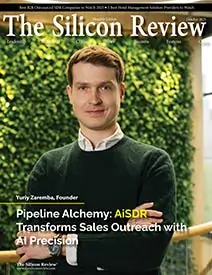>>
Industry>>
Media and entertainment>>
Cultural Signal: Jeff Kinney�...Cultural Signal: Jeff Kinney’s Mass Book Donation Marks a Strategic Inflection in Youth Literacy Outreach
The Silicon Review
23 April, 2025
Jeff Kinney’s donation of 20,000 books ahead of the Diary of a Wimpy Kid 20th anniversary is a deliberate push to accelerate youth literacy momentum through targeted access.
In a move that transcends promotional fanfare, Diary of a Wimpy Kid creator Jeff Kinney has donated 20,000 books just weeks ahead of the series' 20th installment release. While the gesture aligns with the franchise’s milestone moment, its implications reach deeper into the shifting landscape of literacy advocacy, content accessibility, and strategic community engagement within the media and entertainment industry. Kinney’s contribution is part of a broader initiative in partnership with organizations like First Book and other nonprofit literacy networks, targeting under-resourced schools and public libraries across the U.S. As digital content continues to dominate younger audiences' attention spans, Kinney’s print-first push signals a deliberate counterweight—reinvesting in physical books as tactile, impactful educational tools.
This large-scale donation comes amid mounting concerns that digital-native generations are reading fewer full-length books. Publishing analysts note that while eBook and audiobook markets remain healthy, physical book sales in children’s categories have plateaued. Kinney’s move appears calculated: it leverages his platform’s reach to reinvigorate interest in analog reading while simultaneously positioning the 20th Wimpy Kid release as more than a commercial event—framing it as a cultural and educational intervention.
The media industry is taking note. Studios, publishers, and content creators are being urged to consider more hybrid engagement models that combine storytelling impact with measurable social contribution. Kinney’s approach—philanthropic yet strategically timed—offers a blueprint: align legacy content with literacy infrastructure and amplify community goodwill through action, not just branding. As executives navigate increasingly discerning audiences, this signals a competitive edge—where stories that serve become stories that stick.


_2025-11-17_06-38-14.webp)

 (1)_2025-10-21_13-35-14.webp)

_2025-10-02_10-21-48.webp)